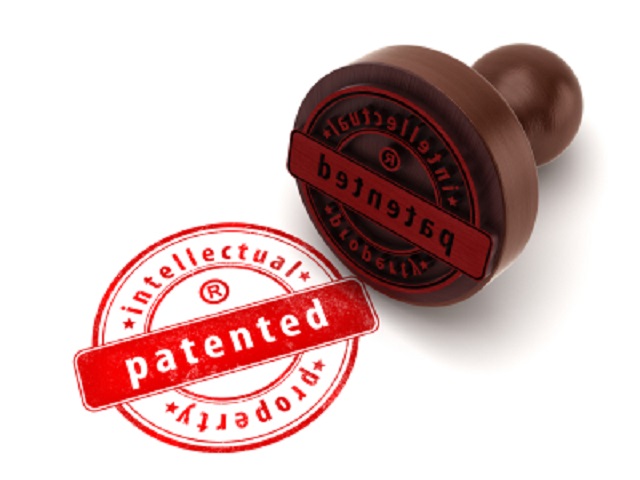Using patent information for the benefit of your SME

Aleck Ncube
DEPENDING on financial resources and the existence of an adequate intellectual property (IP) support infrastructure, SMEs-support institutions in different regions worldwide have initiated different strategies of assisting SMEs to make effective use of the IP system.
Such strategies range from outright granting of funds to enable SMEs to process the acquisition of an IP right, such as a patent, the provision of technology information aimed at enhancing SMEs competitiveness in the local and international market, and the dissemination of information for creating IP awareness.
The underlying objective of these strategies is to facilitate the effective use of the IP system by SMEs.
There are initiatives aimed at assisting SMEs to make effective use of IP through the use of patent information.
Like it is the case in many other countries, SMEs in Zimbabwe constitute the majority of enterprises and are considered the engine of growth.
Unfortunately, SMEs in Zimbabwe rarely seek to benefit from the IP available globally.
It is important to build a national awareness programme on IP Rights and Technology Information in Patent documents.
Nust having realised this, has embarked on an awareness-building programme whereby technology information in patent documents is used to sensitise entrepreneurs and researchers on the usefulness of patent information as an innovative instrument for supporting innovation, SME creation, development and growth.
The main elements of the programme are as follows:
– To sensitise and raise awareness of Zimbabweans on the existence of a Technology and Innovation Support Centre (TISC) in the TechnoPark, and the usefulness of Intellectual Property Rights (IPR), in particular the patent system, as a catalyst for national development and wealth creation.
– To disseminate the technical information in patent documents among researchers, inventors, innovators and students and entrepreneurs, with the view to using it to improve the quality of research and development activities in the research communities and to encourage greater inventive and innovative activities.
– To disseminate technology information to SMEs that will assist to enhance their processes and products with a view to making their products competitive on the local and international markets.
Why is Patent Information Useful for Your SME?
Patent information is useful for SMEs for a number of reasons.
Probably the most important one is that patents are a unique source of technical information which SMEs may find of great value for their strategic business planning.
Most inventions are disclosed to the public for the first time when the patent (or, where the law so provides, when the patent application) is published.
Most SMEs think of patents in relation to major scientific breakthroughs such as Edison’s first electric lamp or large corporations investing large sums in research and development.
There are approximately one million patents granted around the world every year.
Though many of these relate to the same inventions being patented in many countries, it is hard to imagine that so many scientific breakthroughs are being developed every year.
Most patents are granted for less significant inventions including improvements that make the products or processes more efficient or more marketable.
In addition, certain countries have specific legal provisions for protecting rather incremental innovations under the form of utility models (also referred to as petty or innovation patents) which have a shorter duration than patents and are generally easier to obtain.
It is a misperception to believe that patents only apply to complex physical or chemical processes and products or are only useful to large corporations.
Patents may be obtained for any area of technology from paper clips to computers.
There already exist thousands of patents for simple everyday products such as pens, glass bottles, textile fabrics, or bicycles.
Thus, patent information provides a means of learning about current research and innovation often long before the innovative products appear on the market.
The technical information contained in patent documents can provide your SME with important insights that may be used to:
– Avoid unnecessary expenses in researching what is already known
– Identify and evaluate technology for licensing and technology transfer
– Identify alternative technologies
– Keep abreast with the latest technologies in your field of expertise
– Find ready solutions to technical problems
– Get ideas for further innovation
From the point of view of the commercial strategy of your SME, patent information would help to:
– Locate business partners
– Locate suppliers and materials
– Monitor activities of real and potential competitors
– Identify niche markets
Finally, the information contained in patent documents could also be used by SMEs to:
– Avoid possible infringement problems
– Assess patentability of your own inventions
– Oppose grant of patents wherever they conflict with your own patent
What are the advantages of patent documents as a source of information?
They contain information which is often not divulged in any other form of literature. They have a relatively standardized format including abstract, bibliographic information, a description of, and in most cases also drawings illustrating the invention and full details on the applicant.
They are classified according to technical fields under the International Patent Classification System. They provide examples of industrial applicability of an invention.
They cover practically every field of technology.
Where and how can Patent Information be obtained?
The emergence of web-based searchable patent databases has significantly facilitated the access to, and reduced the costs of, using patent information.
Wherever web-based databases are not available, patent databases may be consulted manually, on CD-ROMs, at the national patent offices, or through commercial organisations.
How much do patents cost?
The costs of patents may be divided into four types of costs.
Firstly, the costs relating to the application fees paid to the national or regional patent offices.
Such costs may vary widely from country to country.
And secondly, the costs relating to patent attorneys/agents who assist in drafting the patent application. While the use of a patent attorney/agent is usually optional, it is generally advisable to seek legal advice when drafting a patent document.
Patent attorney fees vary significantly from country to country.
Thirdly, costs of translation.
Such costs are only relevant when seeking IP protection in foreign countries whose official language is different from the language in which the application has been prepared and may prove to be high, especially for highly technical patent applications.
Fourthly, the cost of maintaining applications and patents through payments to the patent office.
Such fees are usually paid at regular intervals (e.g. every year) in order to maintain the application or the patent.
Protecting patents for the entire term of protection (in general, 20 years) in various countries may prove an expensive undertaking, also taking into account that annual maintenance fees are usually increasing the longer the protection is maintained.
For SMEs willing to apply for patent protection in various countries, the service offered by the WIPO-administered PCT system may considerably reduce fees and simplify procedures.
It is highly advisable for SMEs engaging in inventive activities to consult patent databases to find out about existing technologies, identify licensing partners in case a technology already exists and avoid duplication of research activities.
A patent document includes the full description of how a patented invention works and the claims which determine the scope of protection as well as details on who patented the invention, when it was patented and reference to relevant literature.
About two-thirds of the technical information revealed in patents is never published elsewhere and the entire set of patent documents worldwide is approximately 100 million items.
This makes patent information the single most comprehensive collection of classified technological data.











Comments